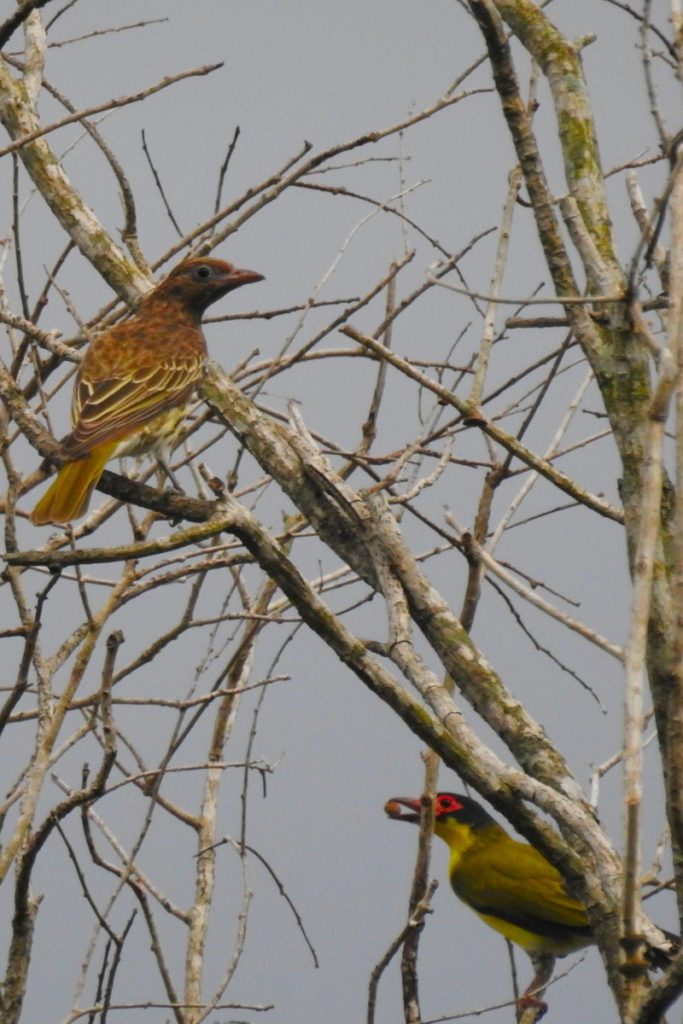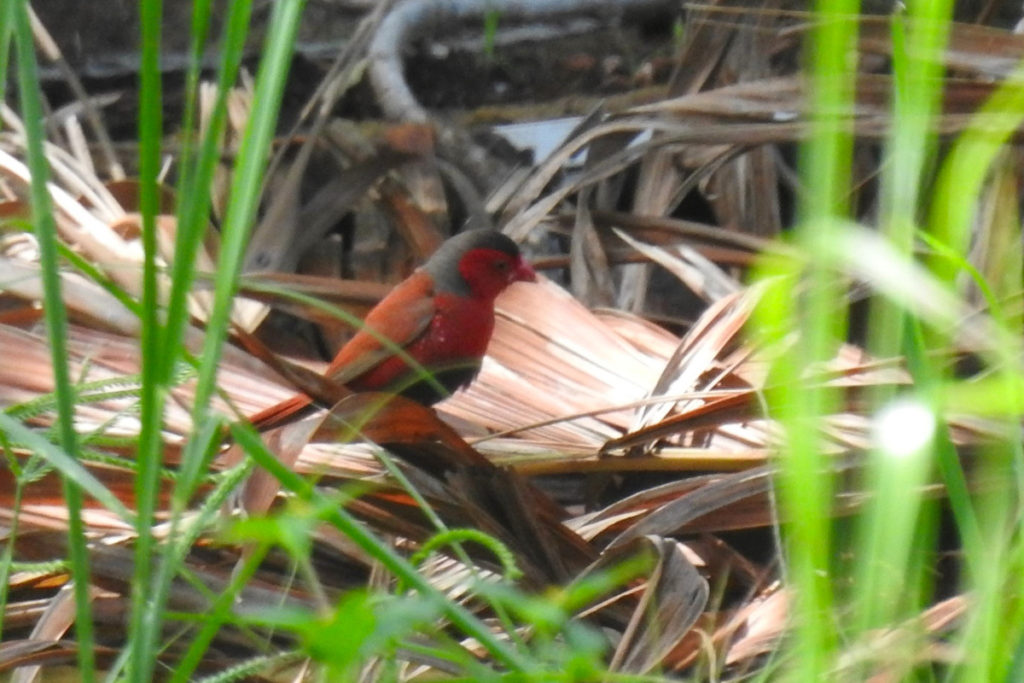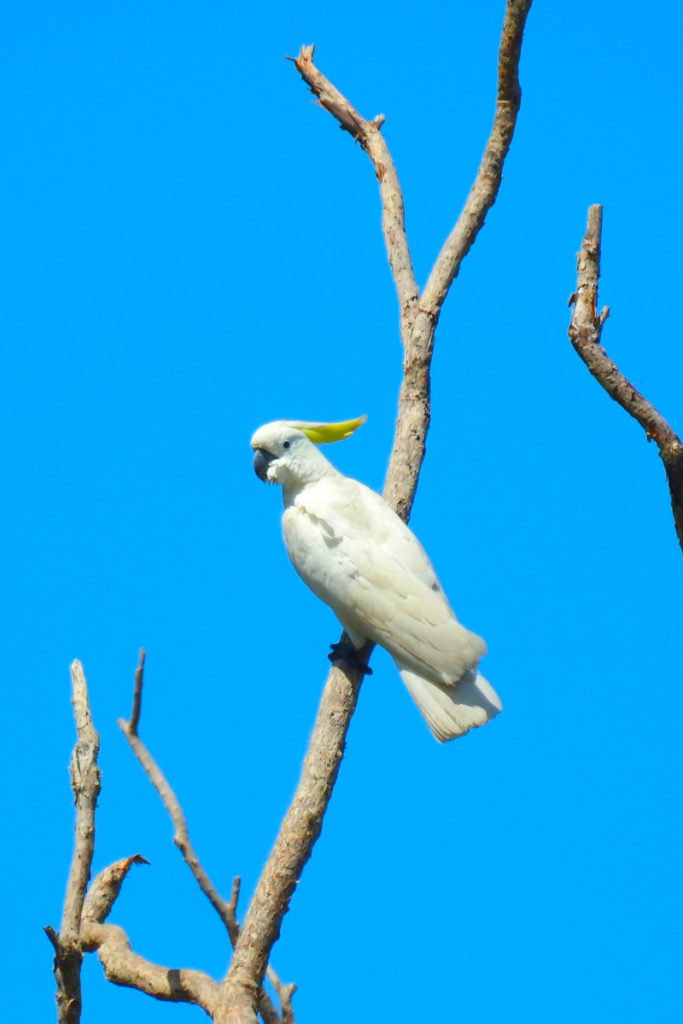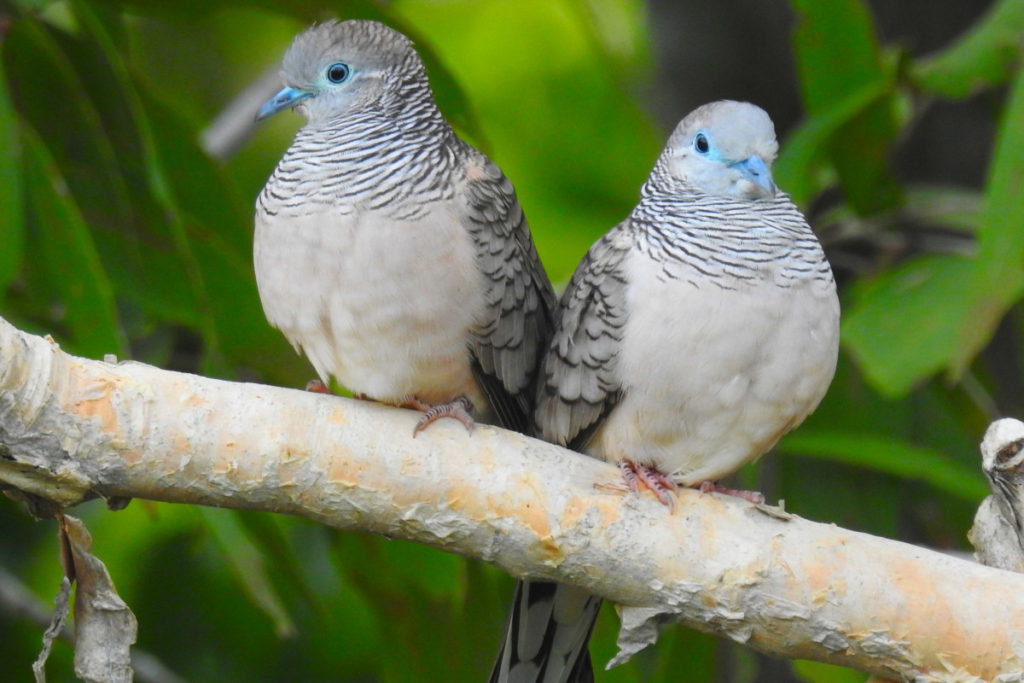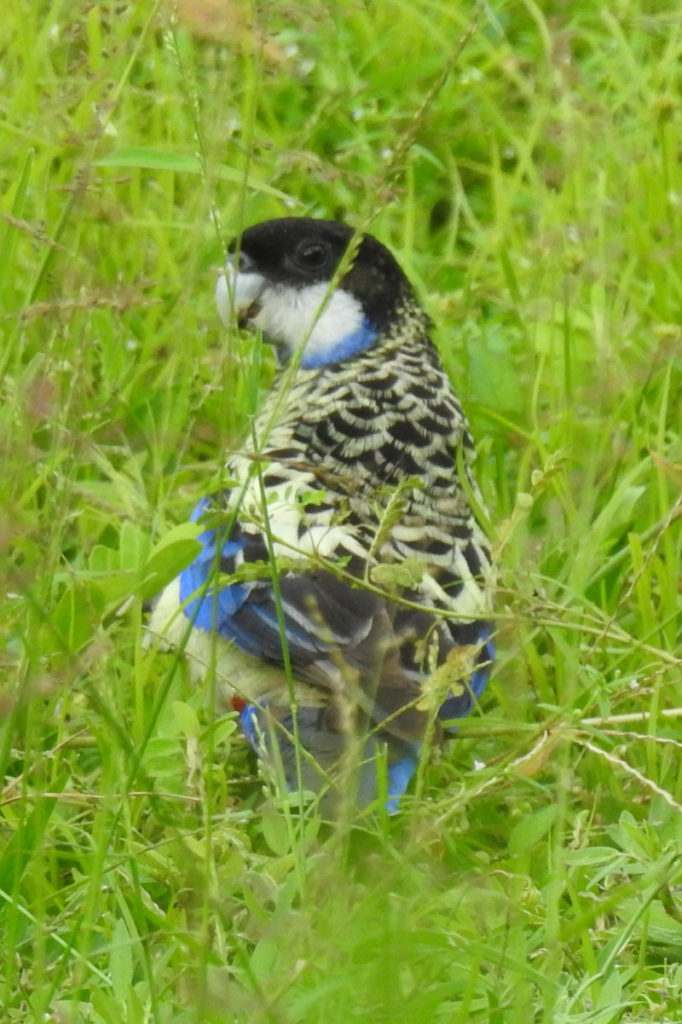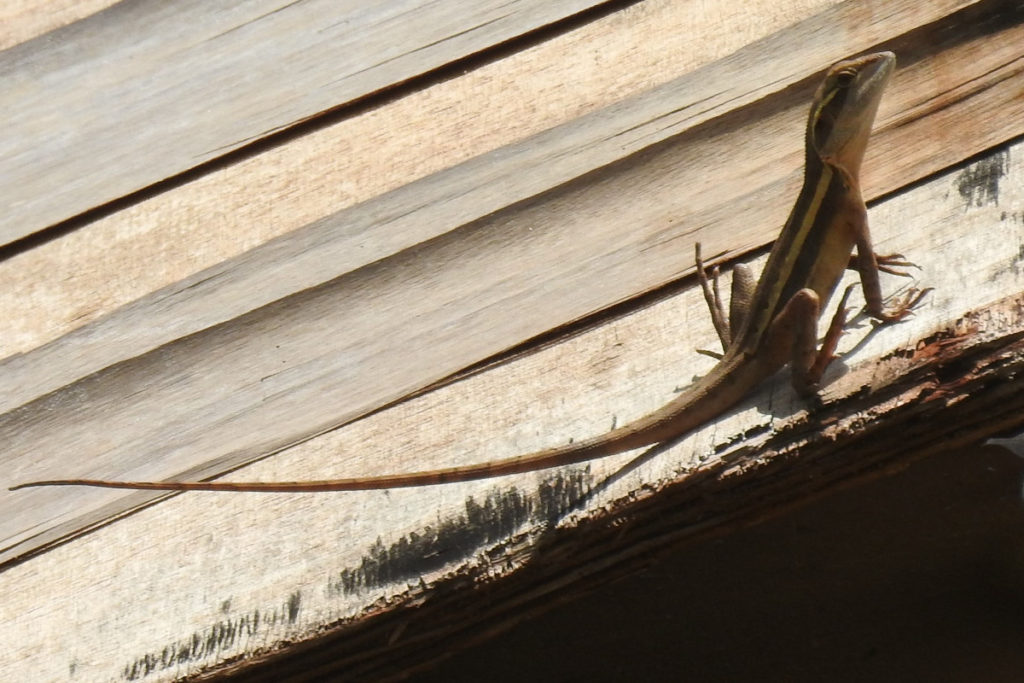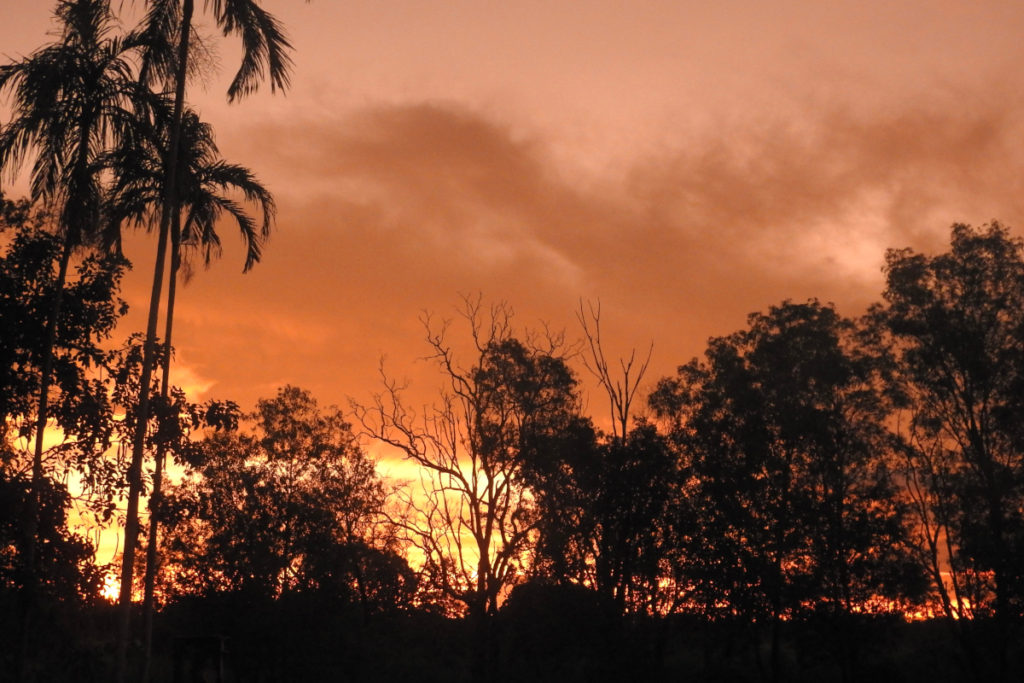I have been doing some exploring around the property on the mighty John Deere tractor. Yes the John Deere is very, very green (and it has bright yellow wheels!) and still looks very new. I am endeavouring to get it looking dirty, but so far have only managed to get some mud on the tyres.
We are still supposed to be in the Wet, but are receiving a good number of beautiful sunny days without rain. There is still a lot of moisture in the ground, keeping the grass green and growing vigorously and many of the farm tracks are still impassable.
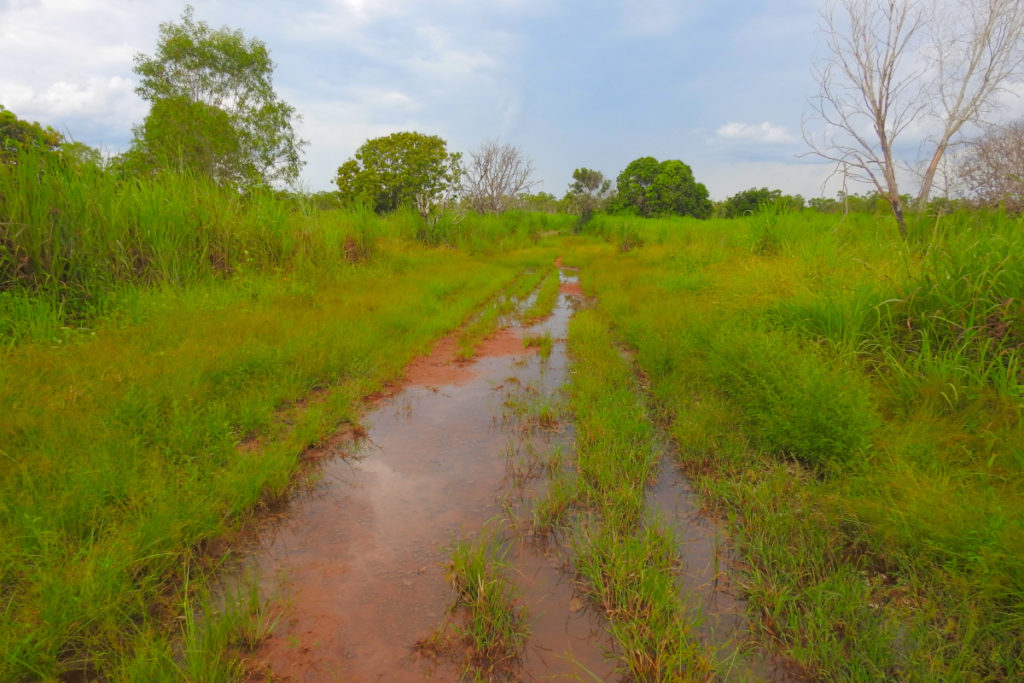
Well, I could try taking the tractor through, but having to explain to Jim (the property owner) his new tractor is bogged in a ditch across the creek… well, maybe not! So I will patiently wait until the tracks dry out enough before exploring further.
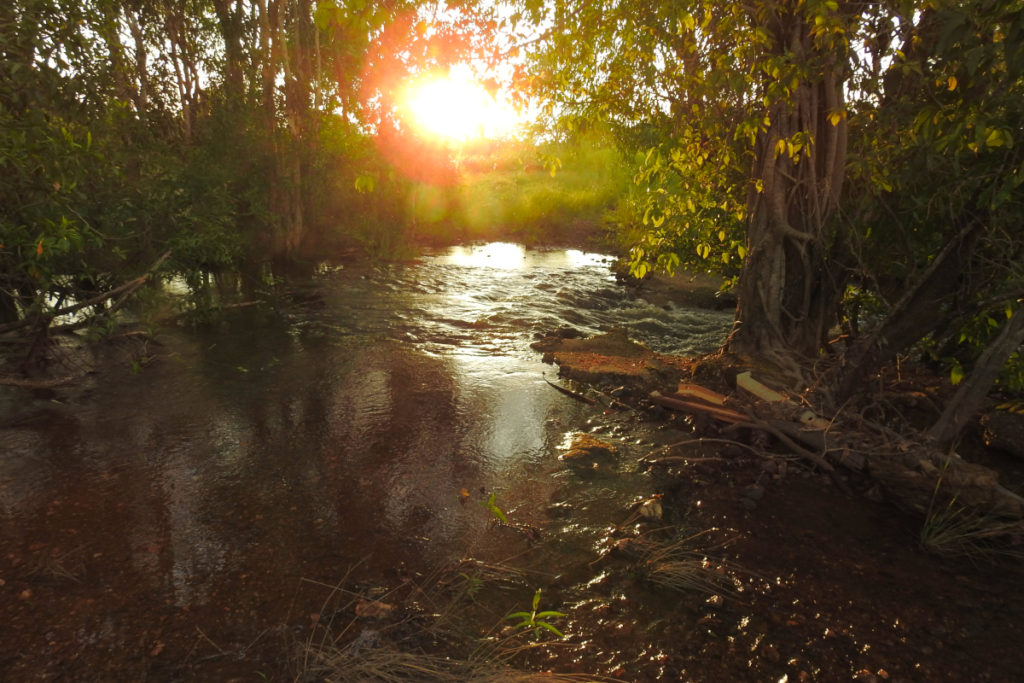
The old stagecoach crossing is still flowing, but there is certainly less water going over it now than previously. And although there is significantly less rain now, it is still possible to get a monsoon and even a cyclone through into May, so I haven’t given up the idea the Wet is over, yet.
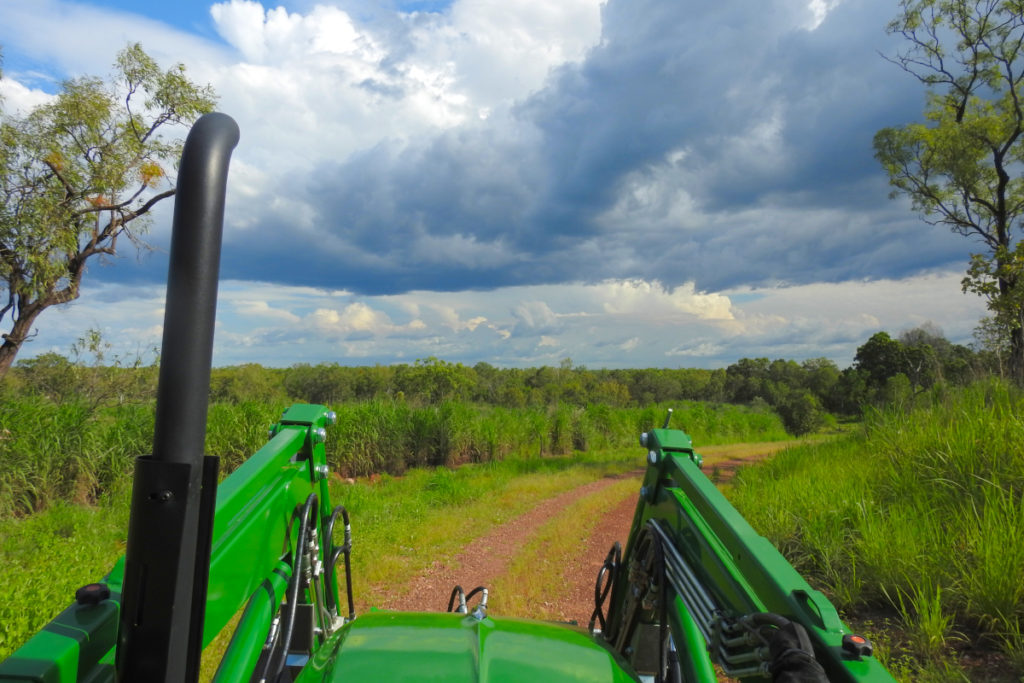
There is a billabong a way downstream from the crossing, which I still want to explore. Getting to it is a bit difficult at the moment; I do not really want to be wandering through grass which is up to 3 metres tall, wondering what else is in there with me. I mean, I expect there to be brown snakes and we do have a water buffalo who seems to enjoy huffing and snorting around the place. I’m definitely sure I do not want to meet him face to face in the long grass!
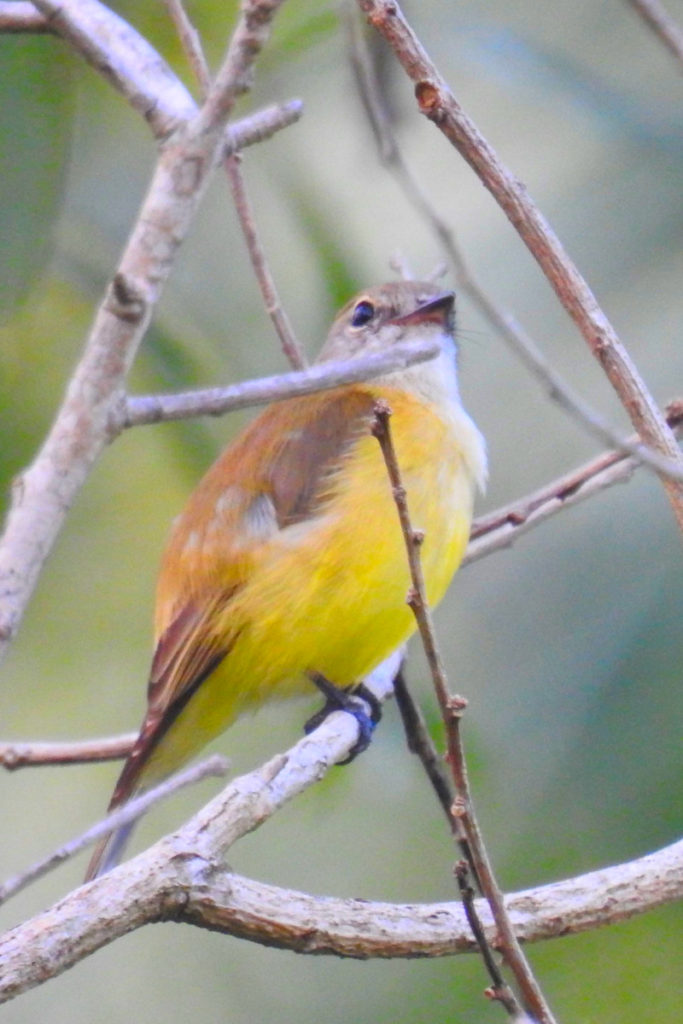
Gold Mine
I still need to figure out where the old gold mine is; I’m told it is “off a track, near a tree”, which are wonderfully vague directions… I don’t want to just stumble around blindly and find it by falling down it – not a good look!
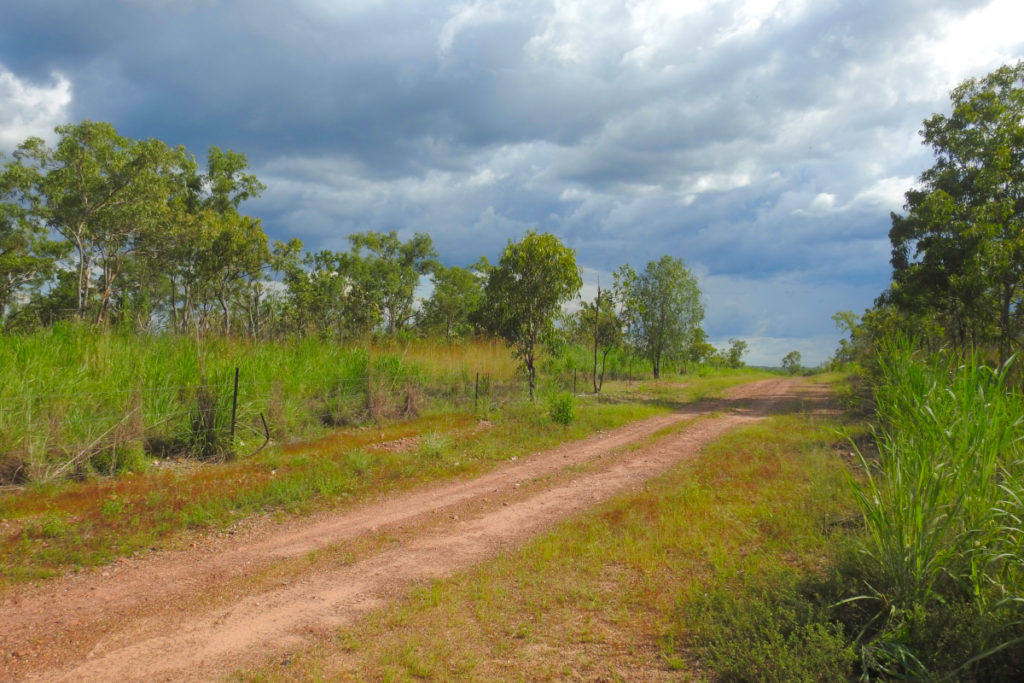
I believe the mine dates from the early 1890’s. At that time, there were several large farming properties in this area, which over the years have been broken up into smaller farms and acreage; my current location probably being one of these offshoots. However, many of those property names still echo throughout the area, with Batchelor, Stapleton, Camp Creek and Eva Springs still extant today.
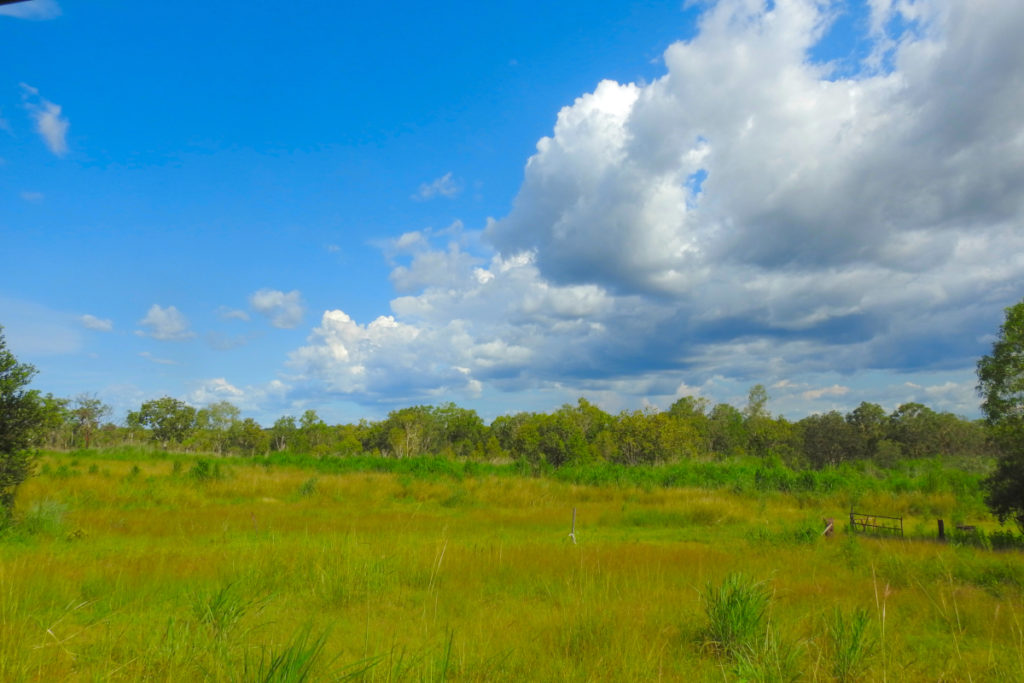
I have no illusions as to there being much to find, I imagine it is literally just an eroded hole in the ground, but I still find it fascinating. I would like to search out more about this area and the people involved and if there were other gold mines around – I would assume it was a popular activity.
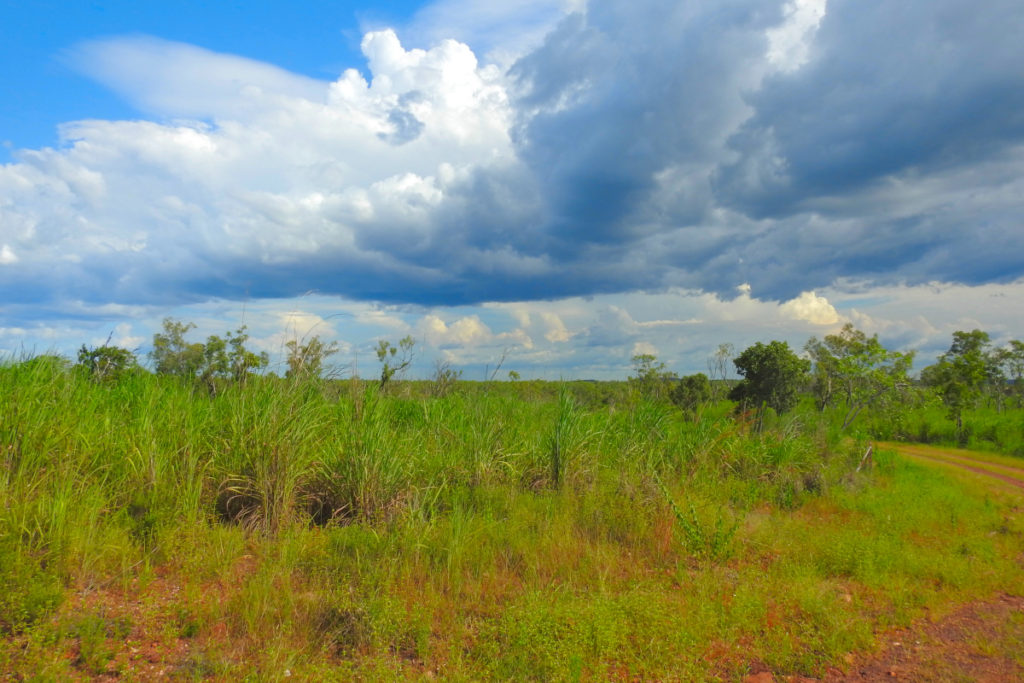
Did these people have experience with mining elsewhere and saw a possibility of finding gold here? Or did they just go and dig in the bush? I mean, this is still pretty rough country today, so it must have been really wild some 130 years ago.
And of course, the ultimate question… did they actually find any gold?
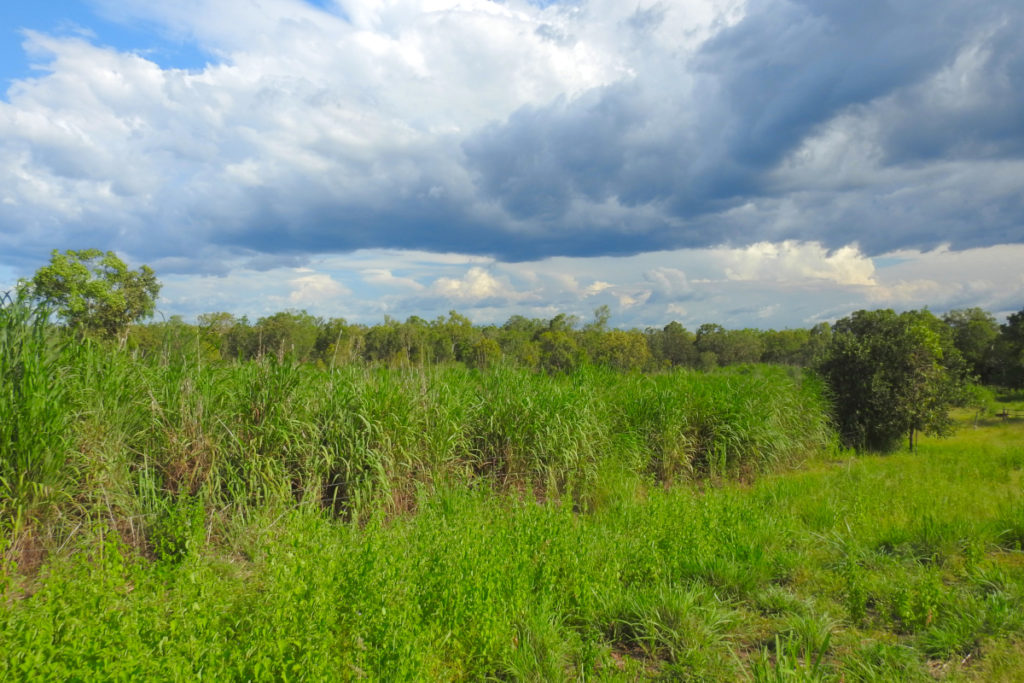
Yes, research needs to be done, which should be exciting! There is an excellent museum in the town of Batchelor, which might be a place to start. So many questions about a simple hole in the ground I haven’t even found yet??? I will report back on my exploits, as they occur…
Amazing Cloud Formations
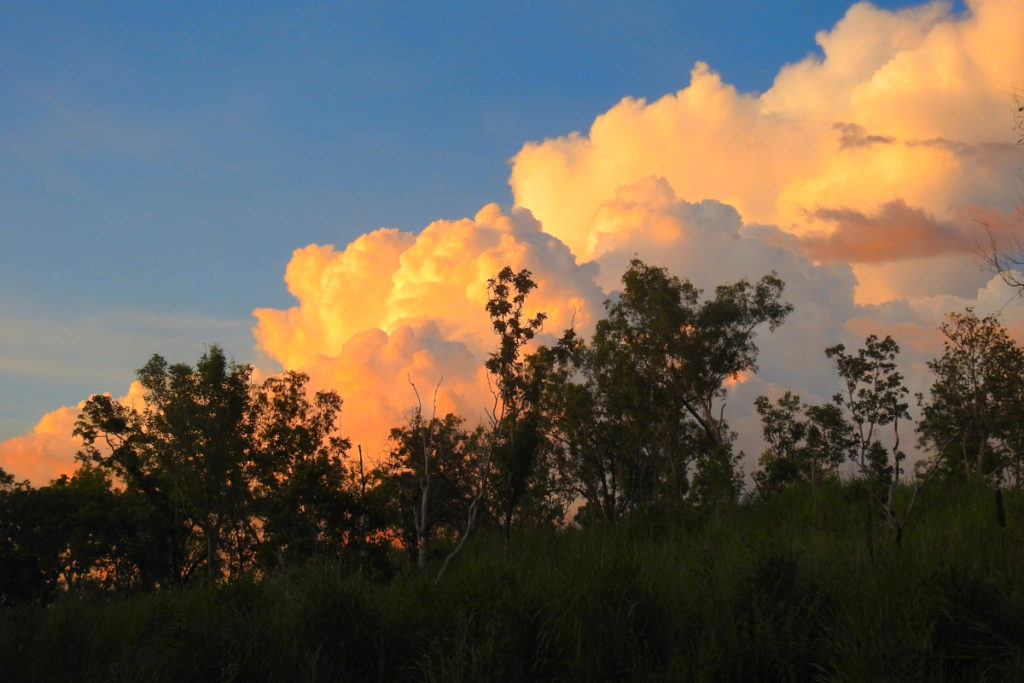
One of the advantages of being up here in the Wet is the absolutely spectacular colours you can get, thanks to the amazing storm clouds that show up most evenings.
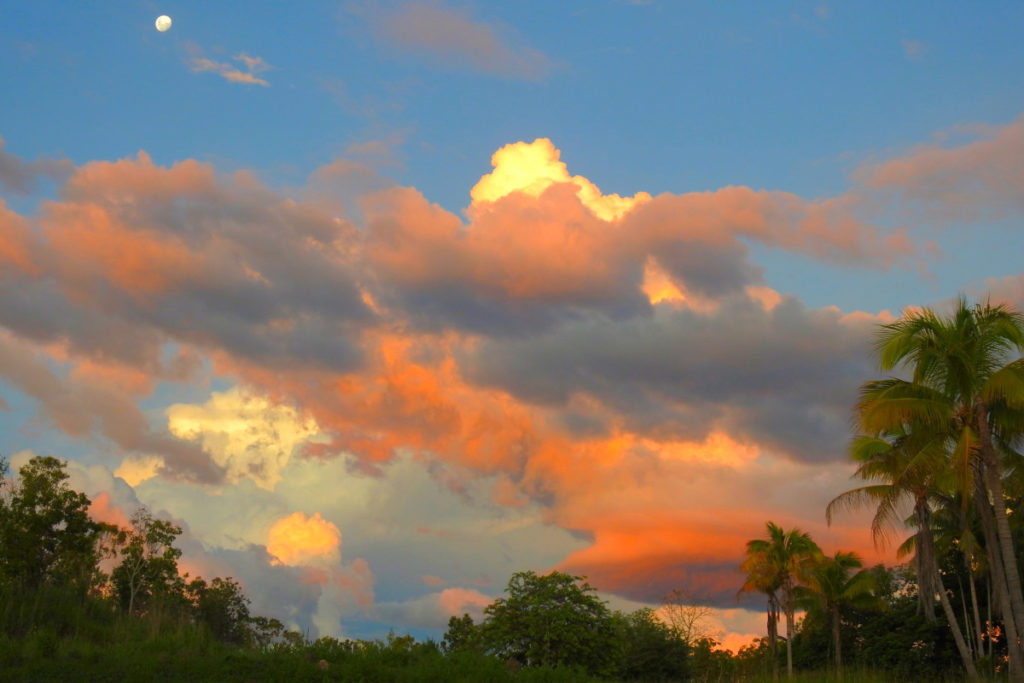
These float in, seemingly just to catch the rays of the setting sun and allowing me amazing photo opportunities, which is good of them.
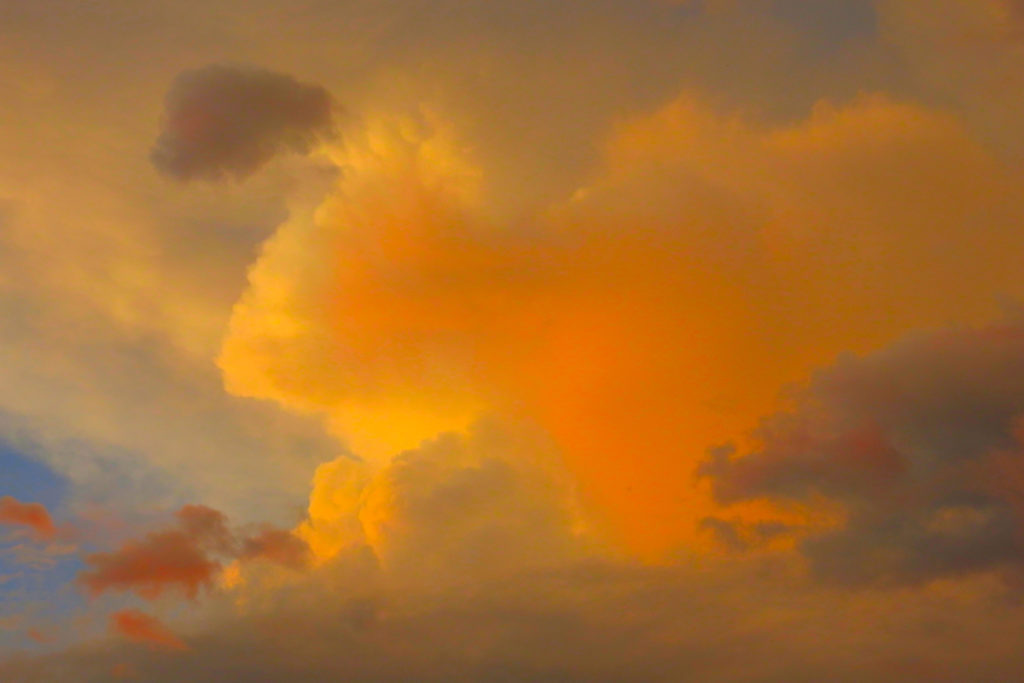
All while I enjoy a beer and feed the local mosquitoes…
Fire in the Hole
An old mining expression that now signifies danger, fire is indeed a very real part of living in the NT – they sure do love their burning! Recently a neighbour ignited the gamba grass on the boundary of the two properties.
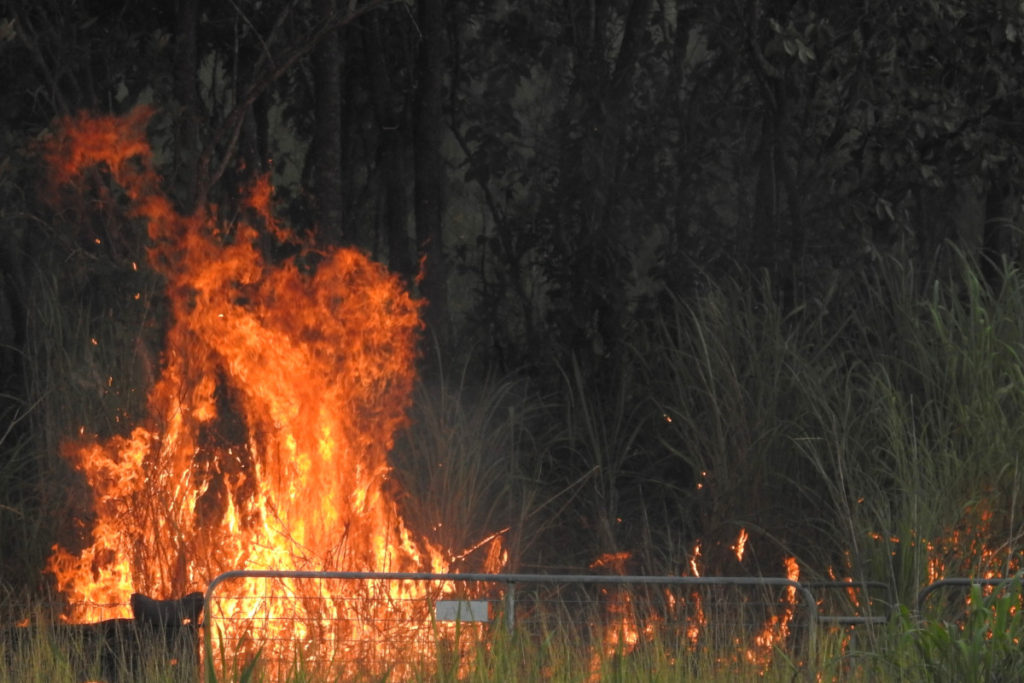
Gamba is one of those fabulous “lets bring this in from another country because it is fine there” experiments, which, like cane toads, went pear-shaped! While gamba is great for cows – they love it – gamba loves the Aussie bush even more and happily takes over everything, growing up to two or three metres high in thick clumps, before it puts up canes, similar to bamboo, which cows will not eat.
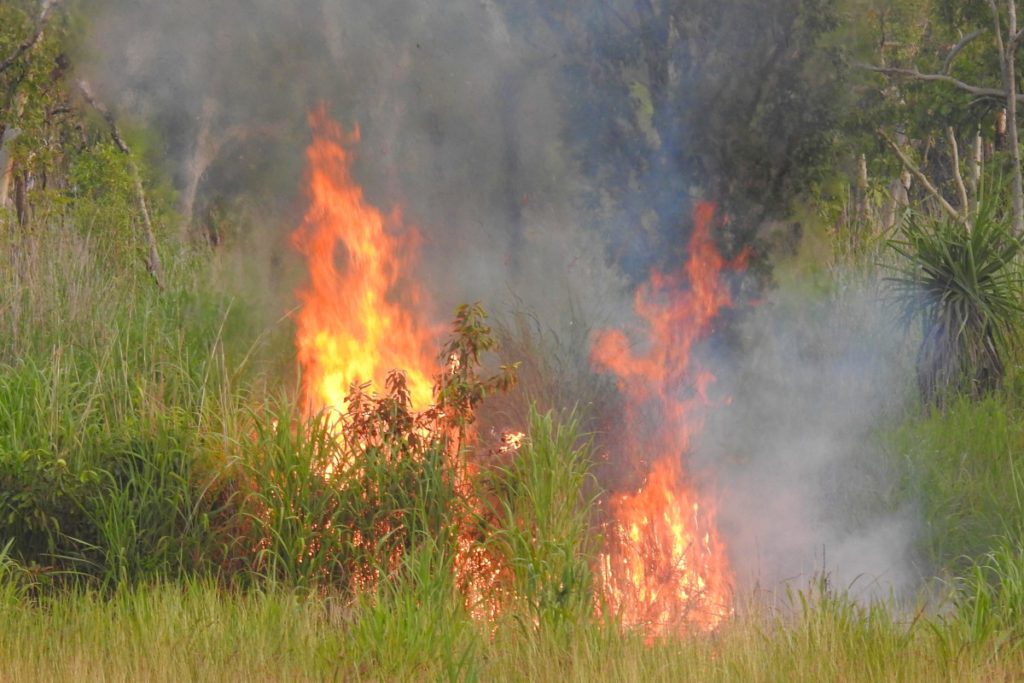
The gamba burns very hot (much hotter than native grasses do) and very quickly, with a fierce roaring and popping sound that is guaranteed to raise the hairs on the back of your neck whenever you hear it!
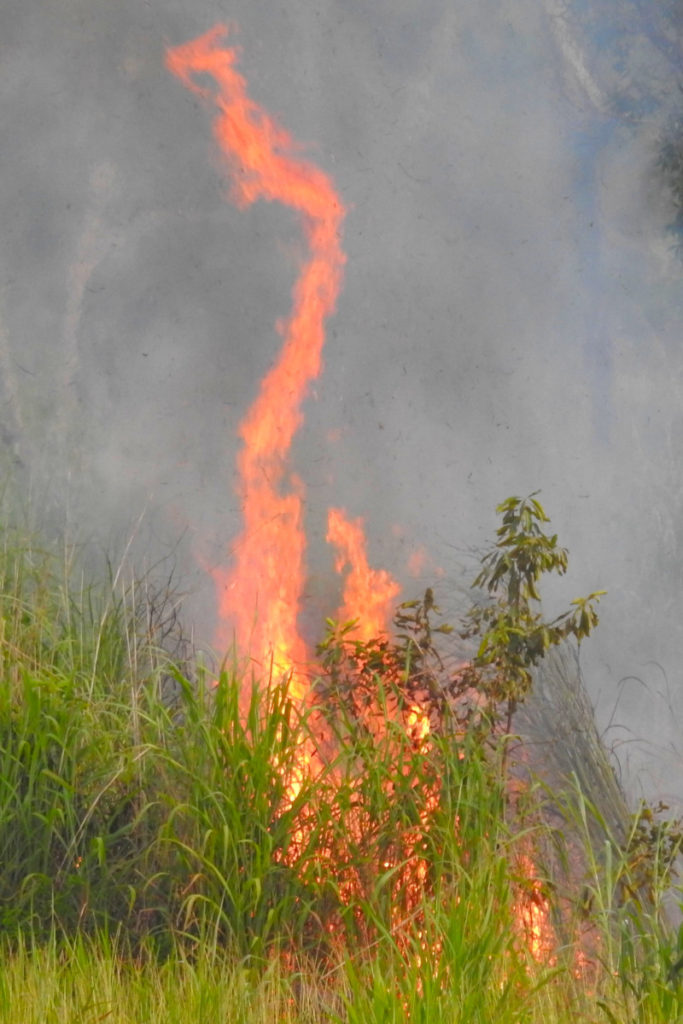
It is good the neighbour is burning while the grass is still green; when everything dries out and browns off as the Dry progresses, the resulting gamba grass fires are frighteningly fast and the flames even more astounding. (There are firebreaks between the two properties and the neighbour had a water tank on his truck, so I guess it was as safe as it could be).
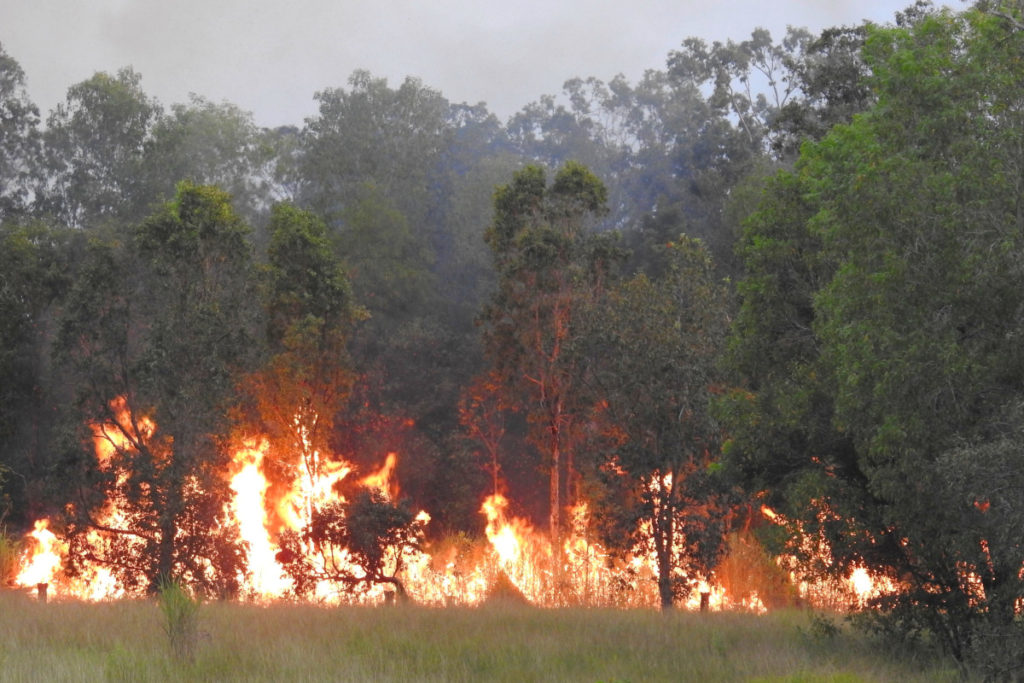
The intention on this property is to set lots of cows to work, eating the gamba down until it is just like a well kept lawn – or close enough, anyway. There are six cows here already (and one buffalo) so that’s a start, but I reckon we’re going to need about a million cows to get on top of this grass…
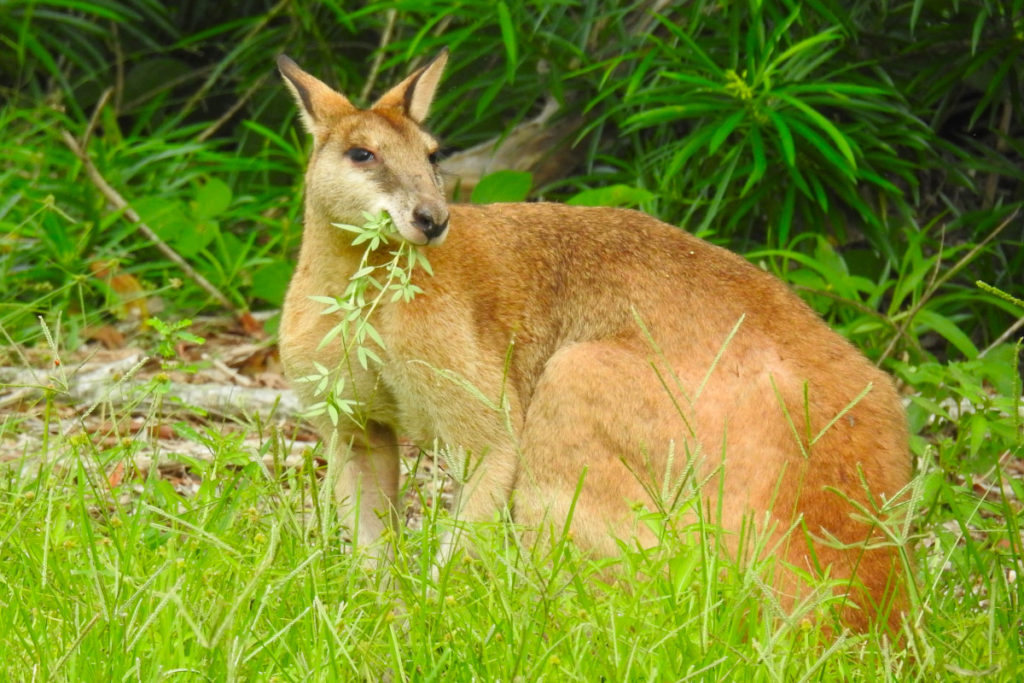
I was checking the boundary fences today and found a few spots where there are sizable gaps in the wire. So there are some repairs needed before any more cows are let loose on the property.
The Twins
These are twin mahogany trees, growing together in almost perfect symmetry near the homestead and they are really beautiful. I guess they are 30-40 years old. I don’t know who planted them but presumably they were planted together, then grew into this awesome shape. It is hard to convey just how large and magnificent these trees are in a mere photograph.
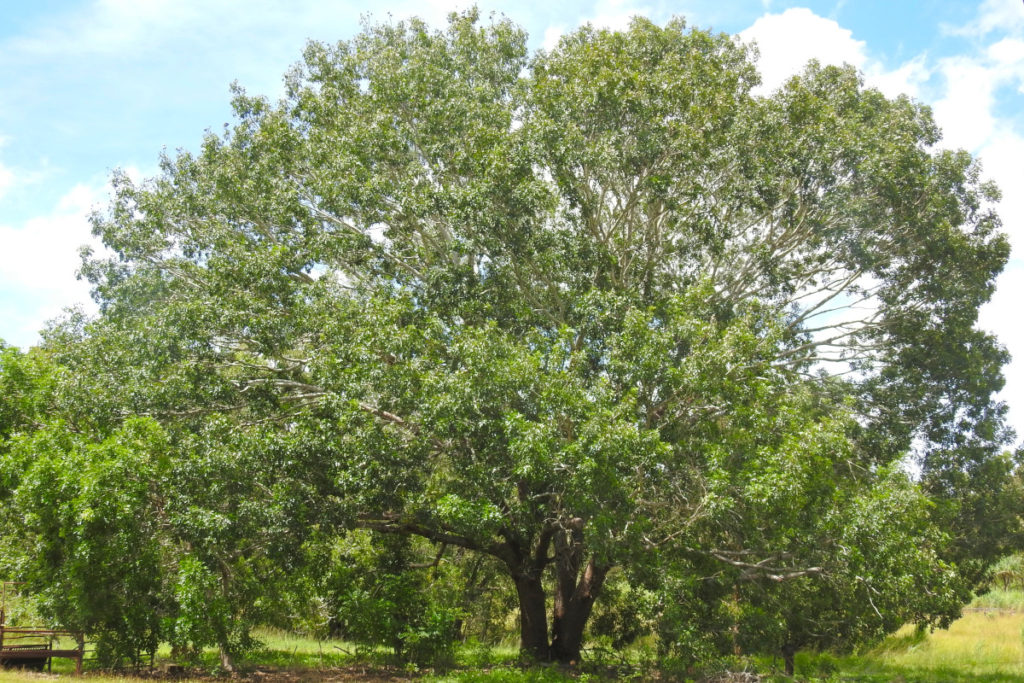
Just beyond the trees, a creek flows from the eastern side of the property, which slopes steeply downhill and channels rainwater into this creek. I attempted to have a look, chugging in on the tractor, but I realised it was getting pretty soggy, so turned around. The neighbour, who has the same issue with his eastern side, was not so lucky. He managed to bog his tractor in thick, gloopy mud over the axles and had to enlist a friend with an excavator to pull him out.
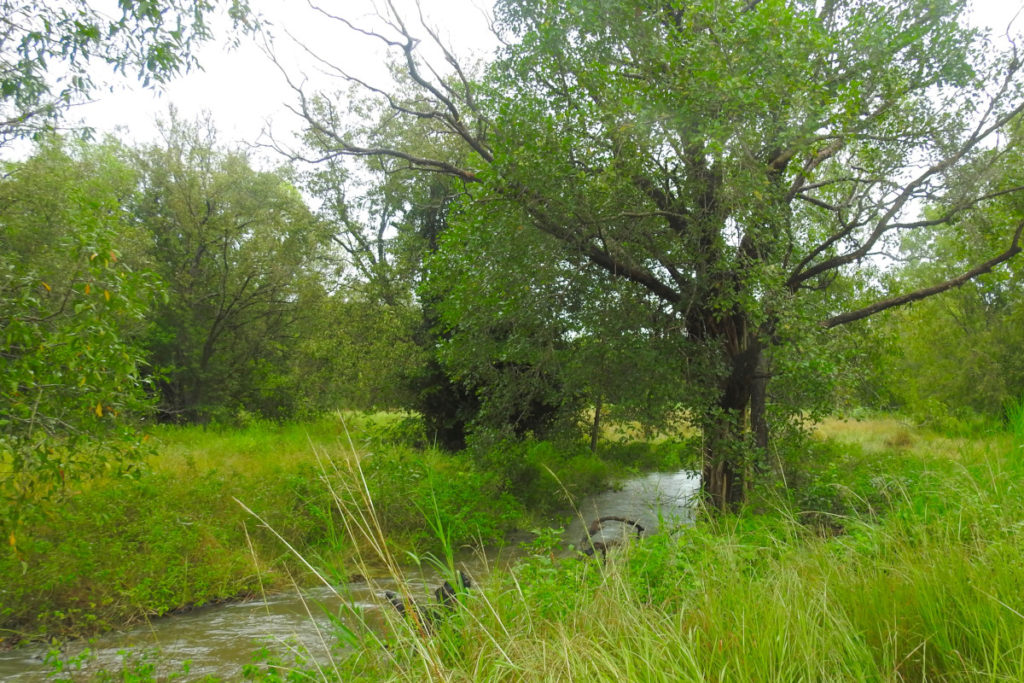
This water flows across the flat in front of the house, joining up with the main creek just near to where I am camped. Then it carries on, over the old coach crossing and eventually on to the mighty Finnis River a bit further downstream.
Sunrise Wandering
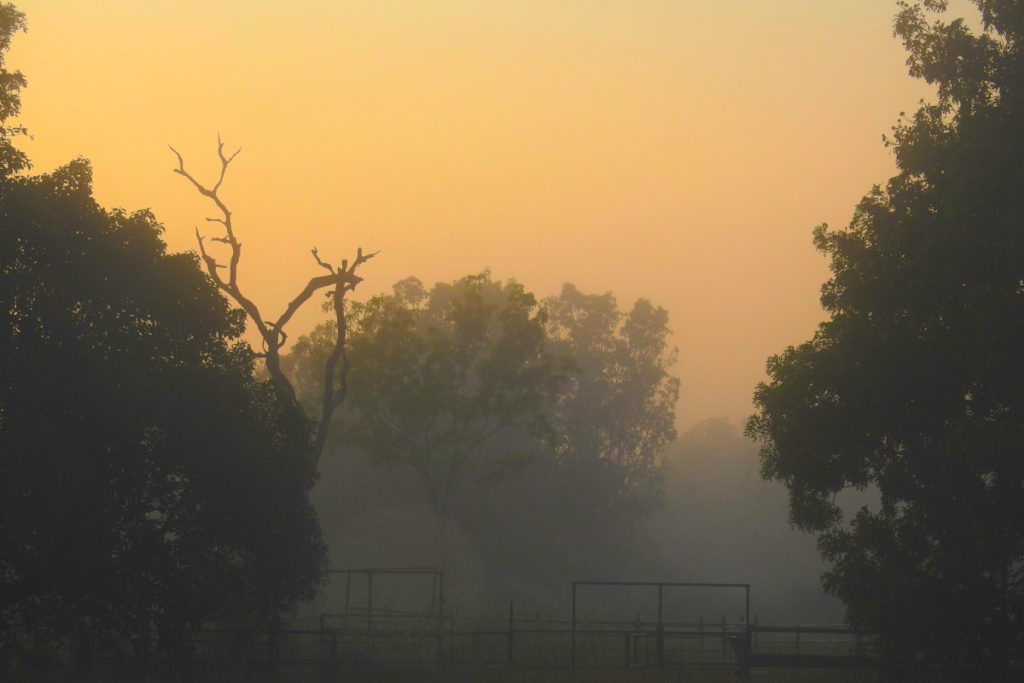
This morning, the dingoes woke me up very early by having a howl in the bush not far from the camper (thanks, guys…) Looking out the window, I saw the sun was just rising and a pretty thick fog was forming across the paddocks and surrounding trees. So I thought I would take a wander through the damp grass and see if there were any photo opportunities in the beautiful early morning golden light, before the sun rose enough to burn the fog off.
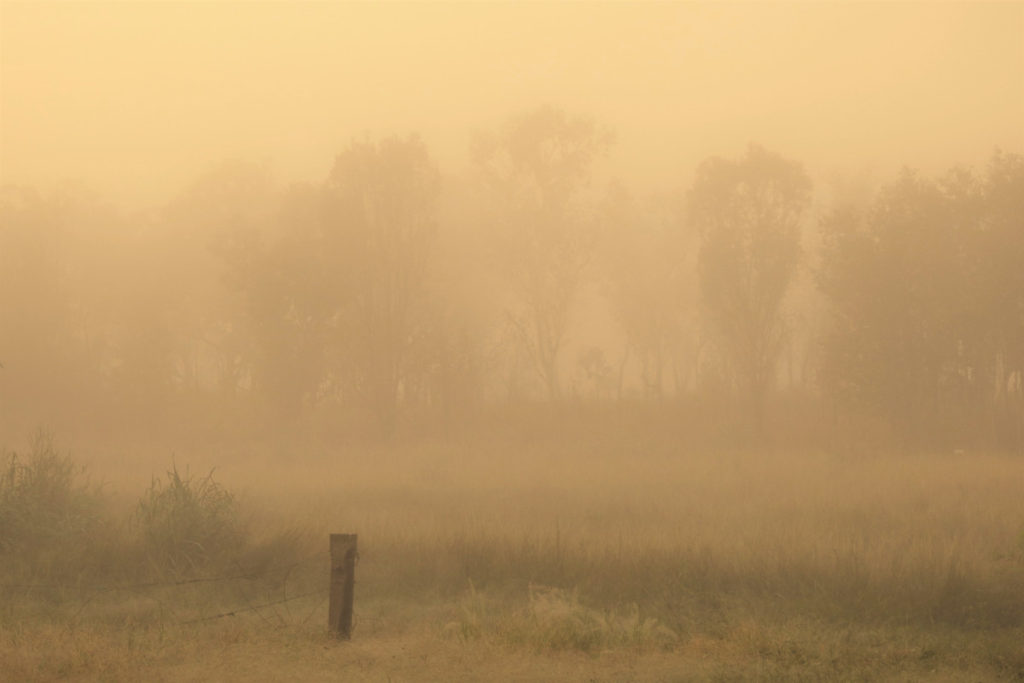
Duckling Update
So finally, some sad news regarding the ducklings reported in my last post. Unfortunately, none of the baby ducks have survived… I think the dingoes and the crows might have been the major contributors to their demise, but we also have Southern Boobook Owls, Kookaburras, Black, Brown and Peregrine Falcons, and Butcherbirds, as well as others, which will all take ducklings for dinner…
So it feels like the odds are really stacked against them, right from day one! Oh well, it was cuteness overload, while it lasted.
Pheasant Coucal
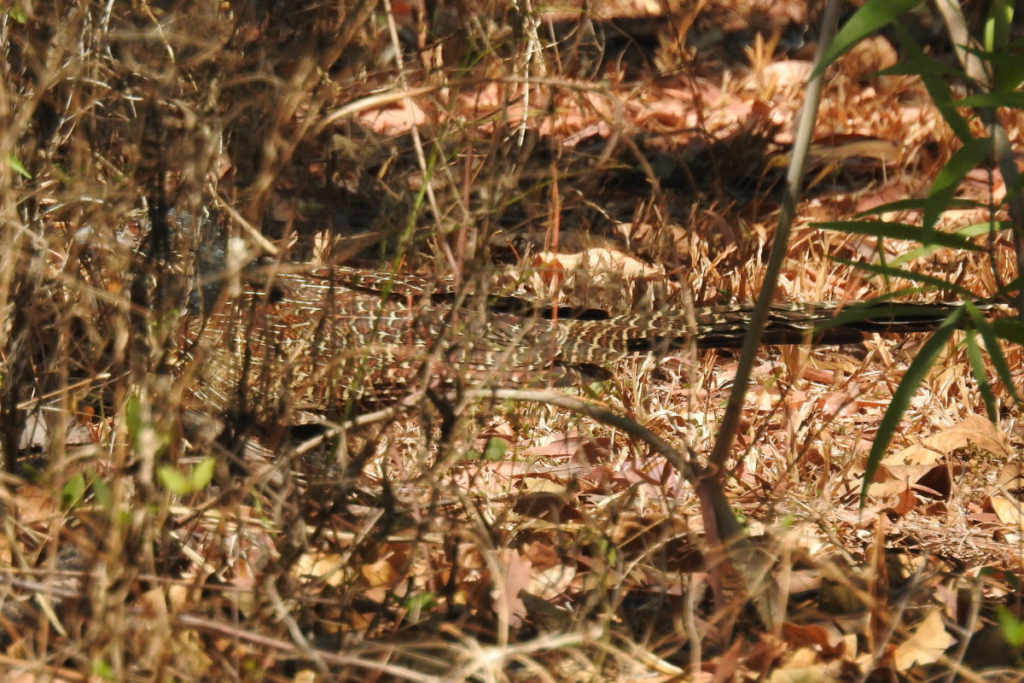
This is a Pheasant Coucal. This quite striking bird is actually a rather big cuckoo that lives in the tropics. These guys make a deep, resonating ‘oop, oop, oop’ call, which starts off slow and gets faster and higher as they progress – it really does sound like you have monkeys in the trees! I stalked this one through the bush but he did not want his photo taken, so I had to settle for this rather ambiguous picture.

Still, it shows how well camouflaged he is in his natural habitat. By the way, this guy is known to eat chicks, so he might be one of the many suspects in the Great Duck Murders of 2022.
So, a few more bird pictures, just for the hell of it. Now the weather is drying out, many of the birds known for the Wet season are heading off (many migrate from PNG for the Wet, returning there over the Dry) and many Dry season birds are starting to appear. I have counted 35 definite different species here at the farm, with at least seven more still awaiting positive identification… Not bad for a little patch of bush in the middle of nowhere!
